Column Charts are probably the most used types of graphs in statistics, and they come in many flavours.
Knowing what type of chart to use to compare data and how to format it for maximum effectiveness can be tricky - and it can make or break your study!
It's not black magic, though.
If you want to engage your audience and produce well-crafted charts that have the potential to change the world, there are only a few simple data visualisation best practices that you need to follow.
And they are all here!
Disclosure: we may earn an affiliate commission for purchases you make when using the links to products on this page. As an Amazon Affiliate we earn from qualifying purchases.
In this guide on how to choose the right chart for your data, I’ll explain about the different types of Column Chart you’ll use.
Then I’ll show you which data goes on which axis.
I’ll show you the different types of Column Charts to use, and how to choose the right chart for your data.
We’ll move on to how to style your Column Charts and review them with a critical eye to decide what should go on your graph, and – more importantly – what you should take off.
FREE DataViz Flowchart
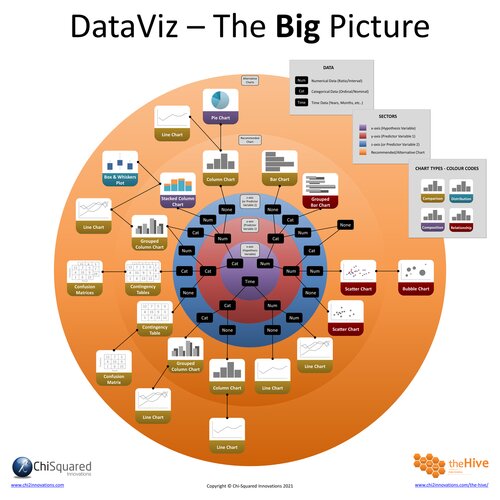
Master the Fundamentals of Data Visualisation
Ultra-Hi-Definition PDF
By the time you’ve read this guide, you’ll know more about Column Charts than pretty much everyone around you!
Your DataViz Jump-Station
This post is part of a series of articles about the most used types of graphs in statistics for presenting data.
You can use the following jump-station to choose the content you're looking for (and there will be another jump-station at the bottom of this post):
DataViz Jump-Station
This post is part of a series on the most used graphs in statistics.
For more detail, choose from the options below:
DataViz:
How to Choose The Right Chart for Your Data
Column Chart
What is a Column Chart?
A Column Chart is a type of graph that represents categorical data with vertical rectangular bars, where the heights of the columns are proportional to the values they represent.
You use Column Charts when one of your variables is categorical and the other is numerical.
Different types of Column Chart exist, and for different purposes. We'll delve deeper into this below.
Column Charts - How to Choose the Right Chart for Your Data @chi2innovations #datavisualization #charts
Column Chart vs Bar Chart
Firstly, we need to ask what is the difference between Column Chart vs Bar Chart. Yes, they are different beasts!
A Column Chart has vertical columns, whereas a Bar Chart has horizontal columns.
When should you use a Column Chart?
When your variable of interest is numerical it goes on the y-axis, the categorical variable goes on the x-axis, and you should use a Column Chart.
When should you use a Bar Chart?
When your variables are the other way round and your variable of interest is categorical, your numerical variable goes on the x-axis and categorical variable on the y-axis – you should use a Bar Chart.
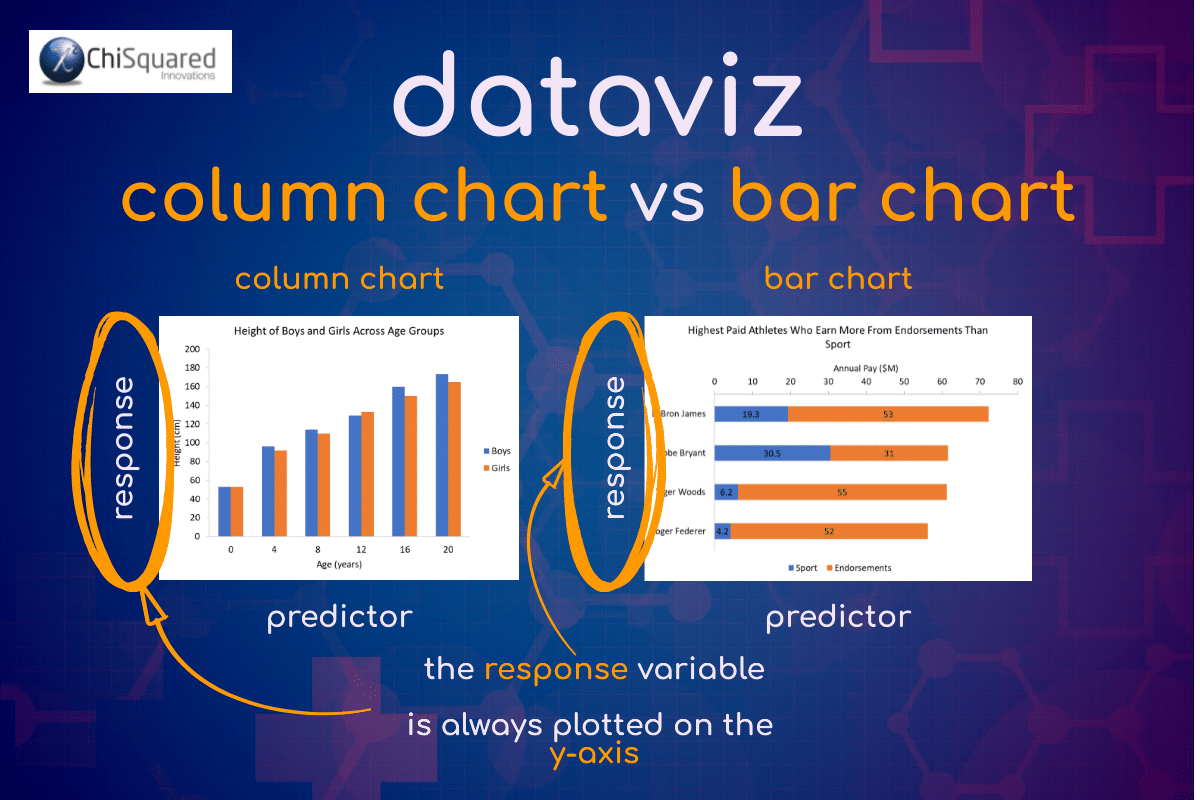
What does a Column Chart show?
A Column Chart summarises categorical data using vertical bars to represent the quantities of data for each category or it can show data changes over time by displaying a comparison among subjects.
VIDEO COURSE
Statistics:
The Big Picture
Free to try - no need to buy or register!
Types of Column Chart
There are 4 basic types of Column Chart you’ll come across in statistics (although there are many others used much less frequently):
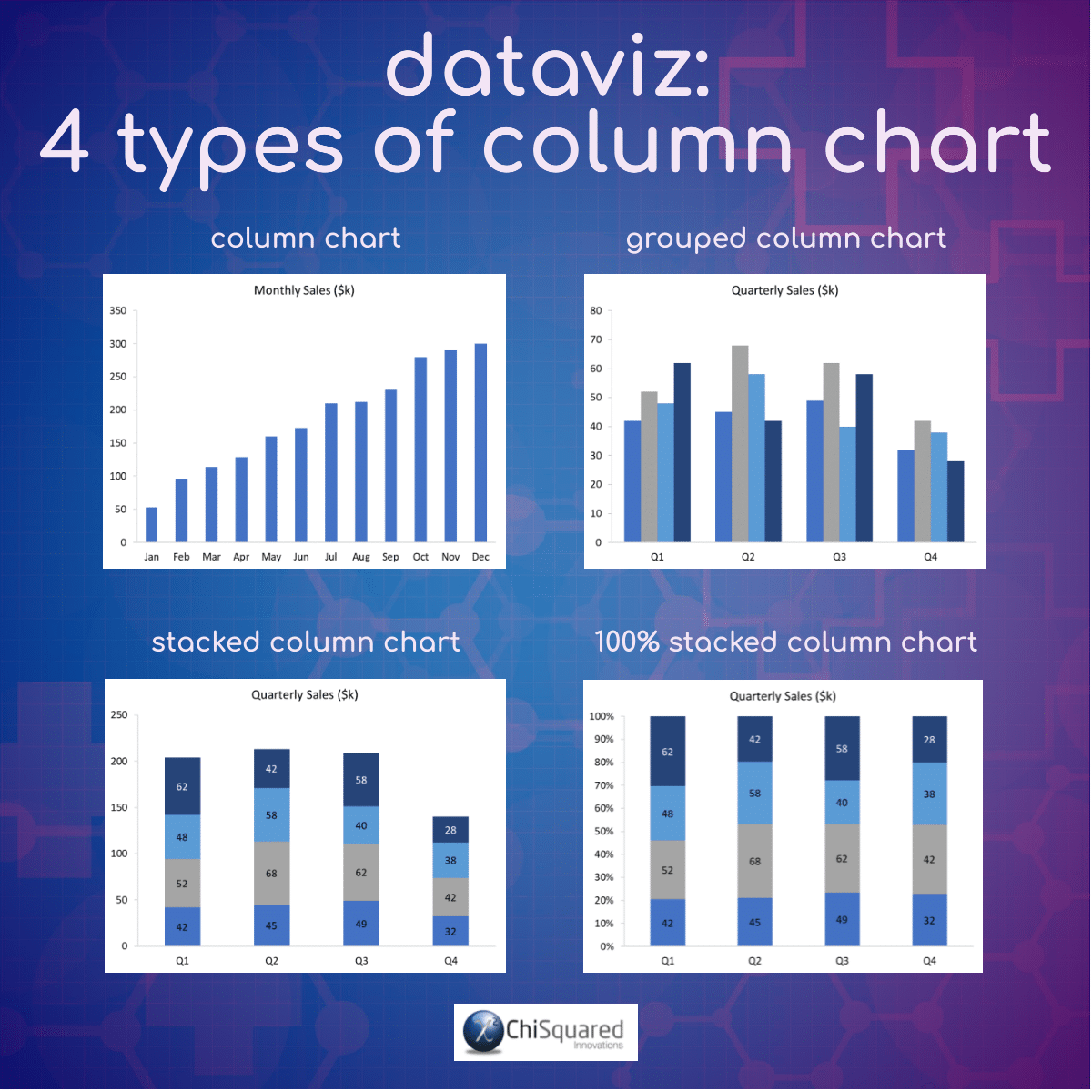
Column Chart.
The simplest type of Column Chart is the one called, simply, the Column Chart. It is a single categorical variable on the x-axis, with its corresponding numerical values on the y-axis. Column Charts are easy to read, and are simple and versatile, but can become cluttered with too many categories.
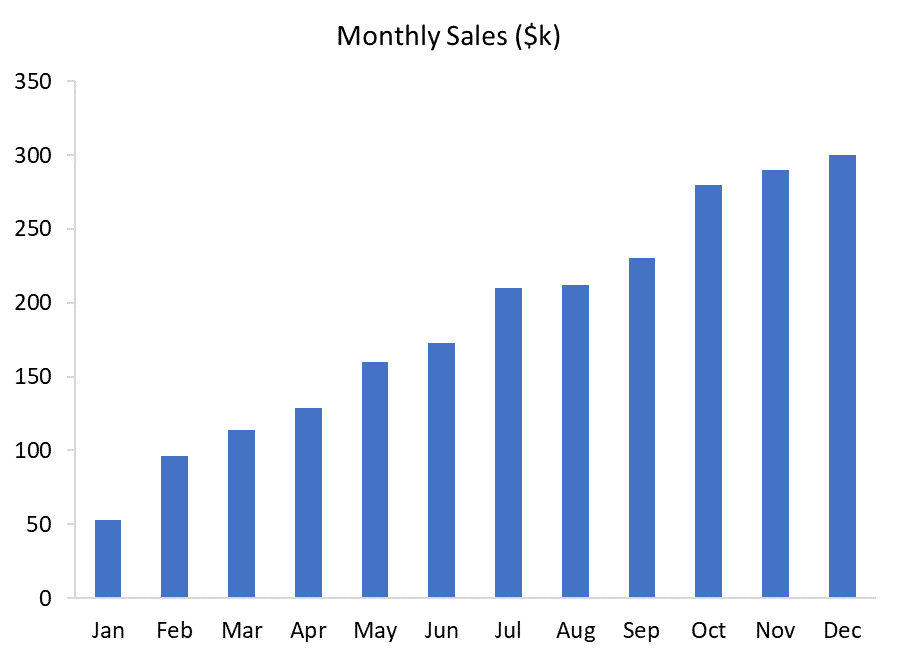
Grouped Column Chart.
A Grouped Column Chart (aka a Clustered Column Chart) is the same as a Column Chart, but with more than one categorical variable plotted on the x-axis. Grouping columns allows the direct comparison of multiple categories across variables, but can become visually complex as more variables and categories are added.
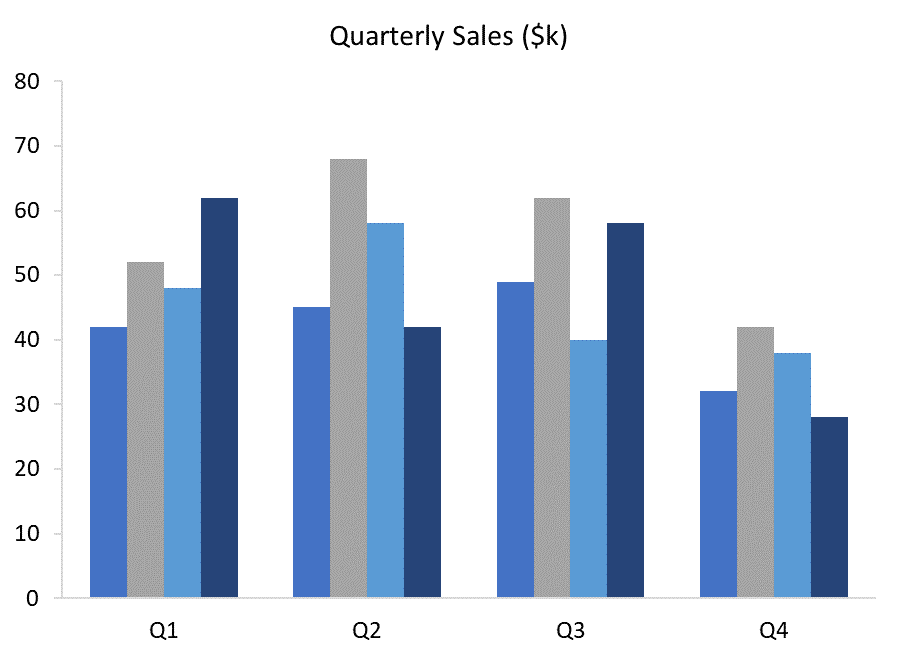
Stacked Column Chart.
A Stacked Column Chart is a variant of the Grouped Column Chart, where instead of showing categories side-by-side, they are stacked on top of each other in vertical columns to show part-to-whole comparisons. With Stacked Column Charts it is easy to compare the total column heights, but can be difficult to compare the sizes of each component within each column.
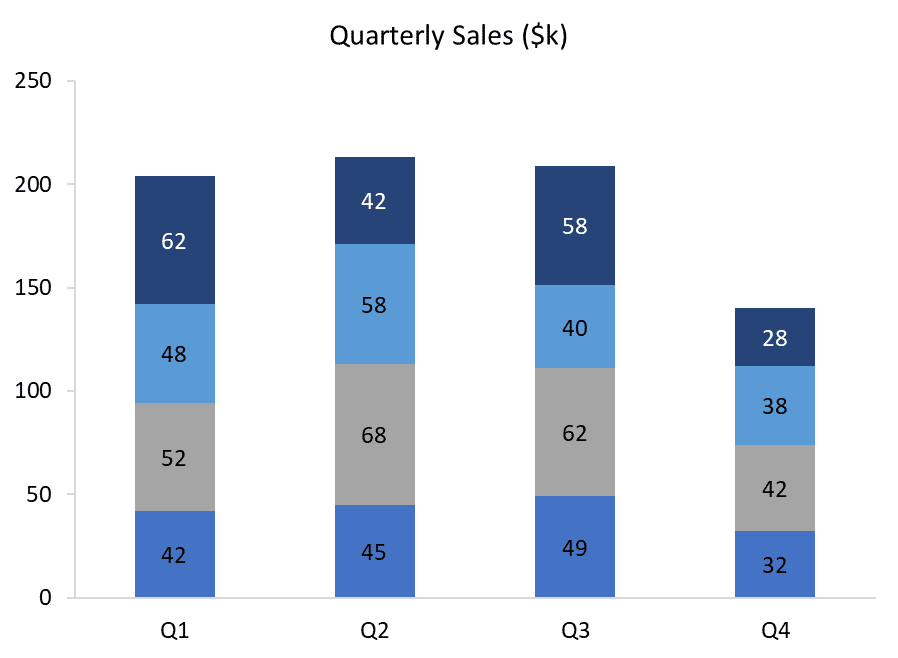
100% Stacked Column Chart.
A 100% Stacked Column Chart is useful to show relative percentages of multiple variables in stacked columns, where the total of stacked columns is always 100%. As with Stacked Column Charts it is easy to compare the total column heights, but can be difficult to compare the sizes of each component within each column.
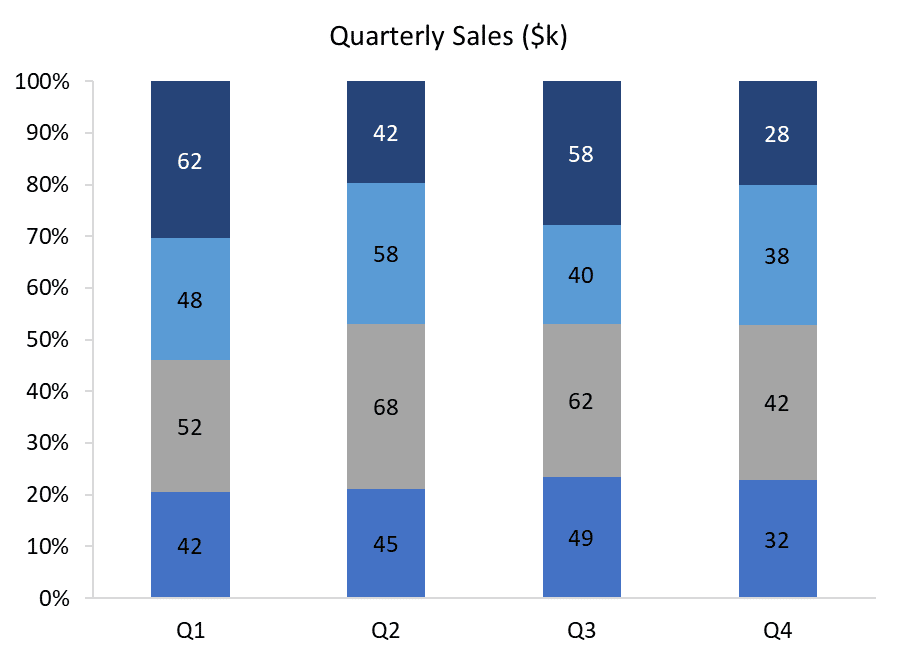
Column Chart Example
For example, if you want to show how the height of boys and girls differ across various age groups, you could use a Grouped Column Chart, like this:
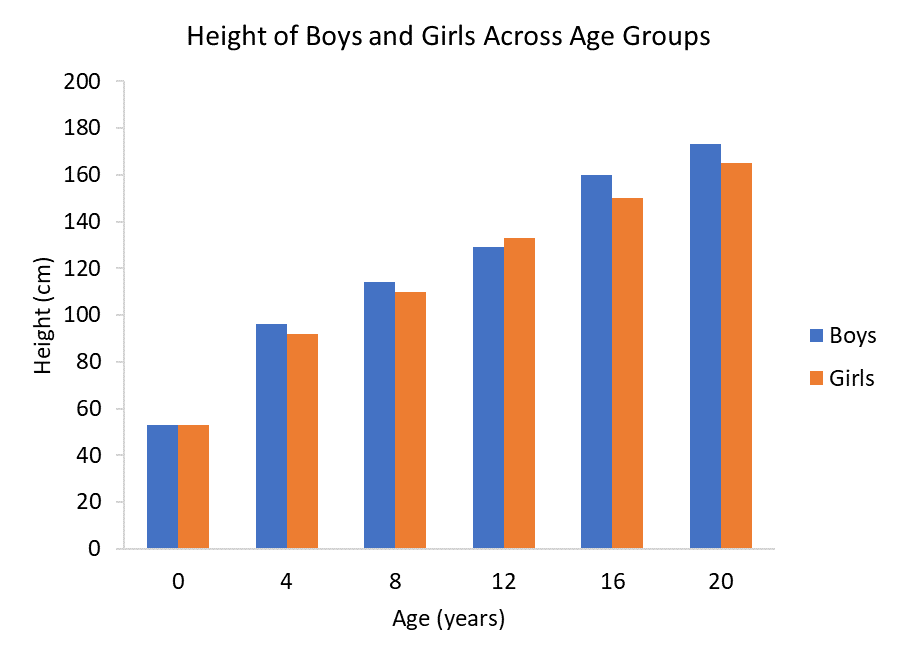
Column Chart Example – Interpretation
When you need to make an interpretation of a Column Chart, you should start by understanding the Title and the axes – including their units.
Then look at each series in turn.
Now take a look at the data in each group.
Applying these to our Column Chart example, we can infer that as boys and girls get older, they grow taller. This may sound obvious (and it is), but we’re not interested in ‘obvious’ – we’re only concerned with data!
Looking at the finer details, boys and girls are the same height at birth, but in all other age groups boys are taller than girls, except at 12 years old, when the reverse is true. This is an interesting detail to point out to your audience, and may well be the starting point for new research!
FREE DataViz Flowchart

Master the Fundamentals of Data Visualisation
Ultra-Hi-Definition PDF
When To Use a Column Chart
Column Charts are best used to compare values for different categories or over a period of time for a single category. The feature of interest should be numerical and on the y-axis.
When To Avoid Column Charts
Column Charts work really well when the number of variables and categories are small – when you have too many your charts become cluttered and confusing. Avoid using Column Charts when the number of categories is larger than 10 (and preferable less than 7 – as few as 5 is perfect), and avoid overloading your charts by restricting the number of variables to no more than 3.
Best Practice for Column Charts
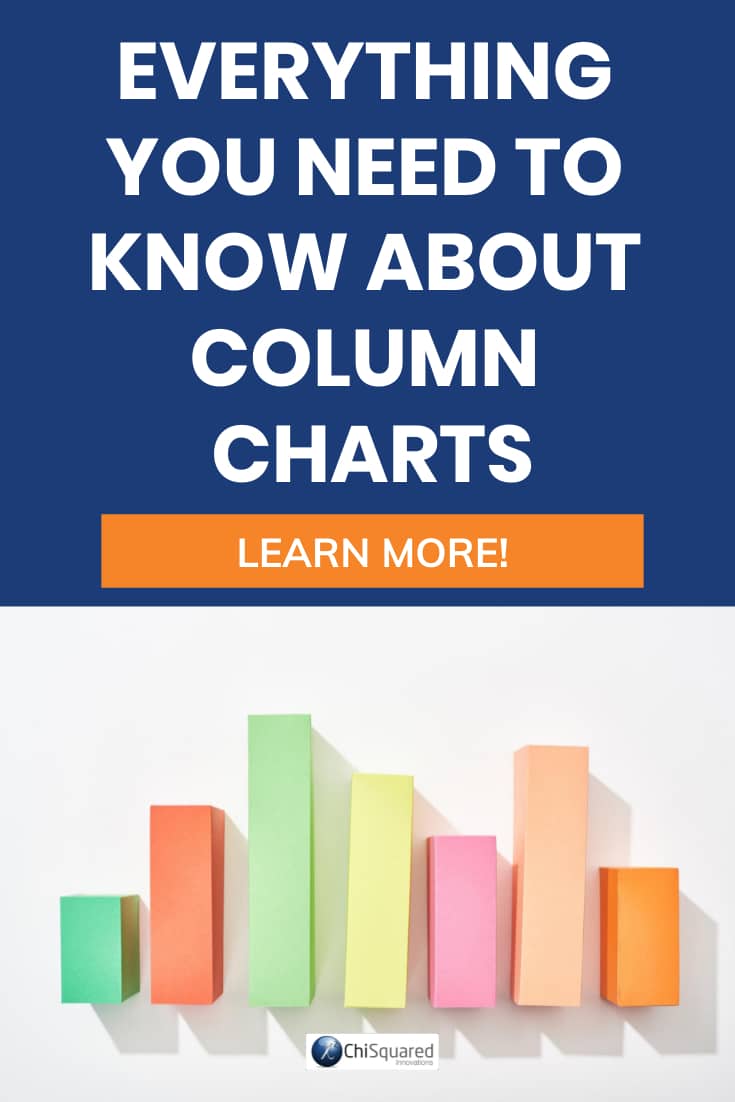
Pin it for later
Loved it?
Pin it to your favourite board!
Whilst Column Charts are probably the most used types of graphs in statistics, it's easy to pick the wrong one, format it poorly and make your entire presentation a yawn-fest.
And nobody wants that, least of all you.
Hopefully, you now have a much better understanding of Column Charts, when to use them, what type of chart to use to compare data, and how to present your chart to inspire those around you to change the world for the better.
Your DataViz Jump-Station
Looking for your next step?
You can use the following jump-station to choose the content you're looking for:
DataViz Jump-Station
This post is part of a series on the most used graphs in statistics.
For more detail, choose from the options below:
DataViz:
How to Choose The Right Chart for Your Data



